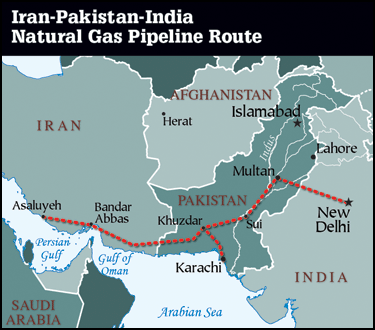 Long before the west’s industrial revolution converted Saudi Arabia into the global center of energy production, Mecca was already a wealthy and bustling international city. Obviously it was not oil that provided this importance to the city at that time, but rather it was the city’s position as a gateway to international trade that provided its wealth. Today, too many of our analysts are focused on finding a Pakistani resource that can be tapped like Saudi oil when the answer to our economic woes may be further back in history.
Long before the west’s industrial revolution converted Saudi Arabia into the global center of energy production, Mecca was already a wealthy and bustling international city. Obviously it was not oil that provided this importance to the city at that time, but rather it was the city’s position as a gateway to international trade that provided its wealth. Today, too many of our analysts are focused on finding a Pakistani resource that can be tapped like Saudi oil when the answer to our economic woes may be further back in history.
It is well known that the current economic situation is not sustainable. Not only the tax scheme needs to be reformed, but more generally we need to expand our economic base. An article in the World Politics Review notes that Pakistan is naturally positioned to be a hub for economic activity in Asia.
These economic arrangements not only predispose the country to militarism, but are also financially untenable. Fewer than 2 million people in a country of 190 million pay taxes. Power shortages cripple businesses and lead to circular debt, displacing the cost of electricity subsidies. Pakistan faces a 350 percent increase in energy demand by 2030, but lacks the finances to undertake major energy projects alone. This military-heavy economy only survives thanks to the lifeline of American aid, which is locked in by Washington’s fears of Pakistan’s implosion.
To build themselves up as a viable alternative, Pakistan’s middle class businesses need sustainable economic growth driven by reliable sources of energy and open markets for Pakistani products. To achieve that, Pakistan must reconnect economically to the rest of the region. Meanwhile, India, which seeks access to Central Asian energy supplies and more-efficient distribution networks for food staples, would also profit from integration, as would Afghans and Kashmiris, whose isolated economies need connectivity to flourish.
Actually, this can provide benefits far beyond improving the economy only. Hosting trade routes between Iran and India, for example, would actually strengthen our security vis-a-vis India without requiring a single rocket.
The main proposed projects for regional integration — the Iran-Pakistan-India (IPI) and Trans-Afghan natural gas pipelines — would improve India’s energy access and give Pakistan $200 million a year in transit fees, but they also have a strategic dimension: These projects as well as other Central Asian trade would flow from the region’s northwest, putting Pakistan “upstream” of India. This would give Islamabad economic leverage over and increase its confidence vis-à-vis New Delhi — and it would do so in a way that is less volatile than increasing Pakistan’s military arsenal.
The National Assembly approved an increased defence budget earlier this year when this very arms race is actually making us less secure. We are spending every last rupee to keep up with India’s massive defence spending when the reality is we do not have the resources to do this.
The problem for Pakistan is that there is very little it can do to effectively counter an operational Indian BMD shield. The absence of both resources and indigenous capabilities to develop its own missile-defense system renders Islamabad’s responses obsolete. But more ominous for Pakistan is the fact that an operational Indian anti-ballistic missile (ABM) capability would effectively provide New Delhi with an assured second-strike capability.
This does not mean that we cannot be secure against Indian hegemony, it just means that we need to look for more ways of establishing our security that fit within our natural means. In other words, if we want to be “strong”, we need to think “smart”. Our nuclear arsenal is massive – the fourth largest in the world. We have mastered the art of death – it’s time that we focus on the art of life.
According to the website EconomyCheck.com.pk, serving as a trade route between China and the Middle East, Pakistan could boost GDP by 2 percent or more.
China-Middle East trade is worth $172 billion today. It will exceed $2 trillion by 2030. If even 5% of Middle East trade flows through Pakistan, it will boost transit receipts collected by government by 2% of GDP per annum.
Combine this with the economic boom that would result from being a transit for Iranian energy and the impact becomes enormous. Claiming our natural role as the gateway of Asian trade will give a better position vis-a-vis not only India but vis-a-vis America also. In order for this to happen, however, we must stop the trend of isolationist thinking and participate openly in the world community.
![]()







Mahmood Adeel, are you trying to hammer a glass nail into a steel plate? You thinking is very positive but at this time we need to change the psyche of the nation,embroiled
with whose Islam is purer than the virgin’s eye.Investors from abroad are more worried about financial security in Pakistan as compared to bomb blasts here and there.Trade in commodities must follow a discipline that our leaders either do not know or feel it would hurt their ego.I do find great empathy in your article for New Delhi!